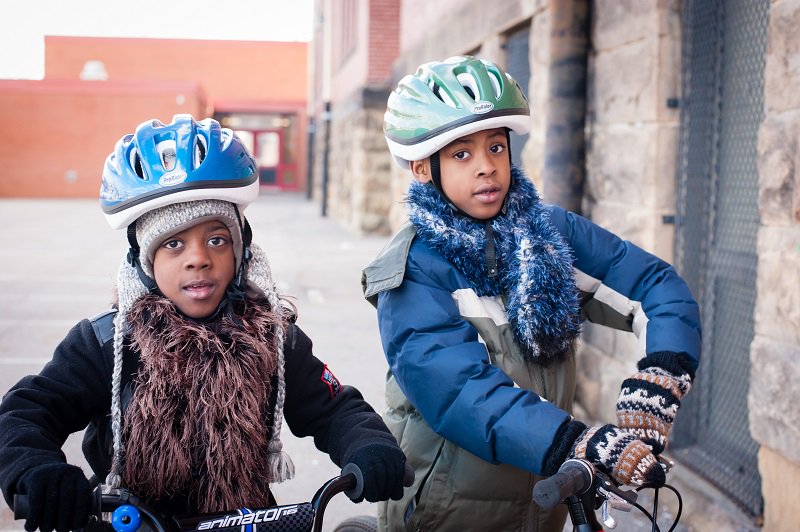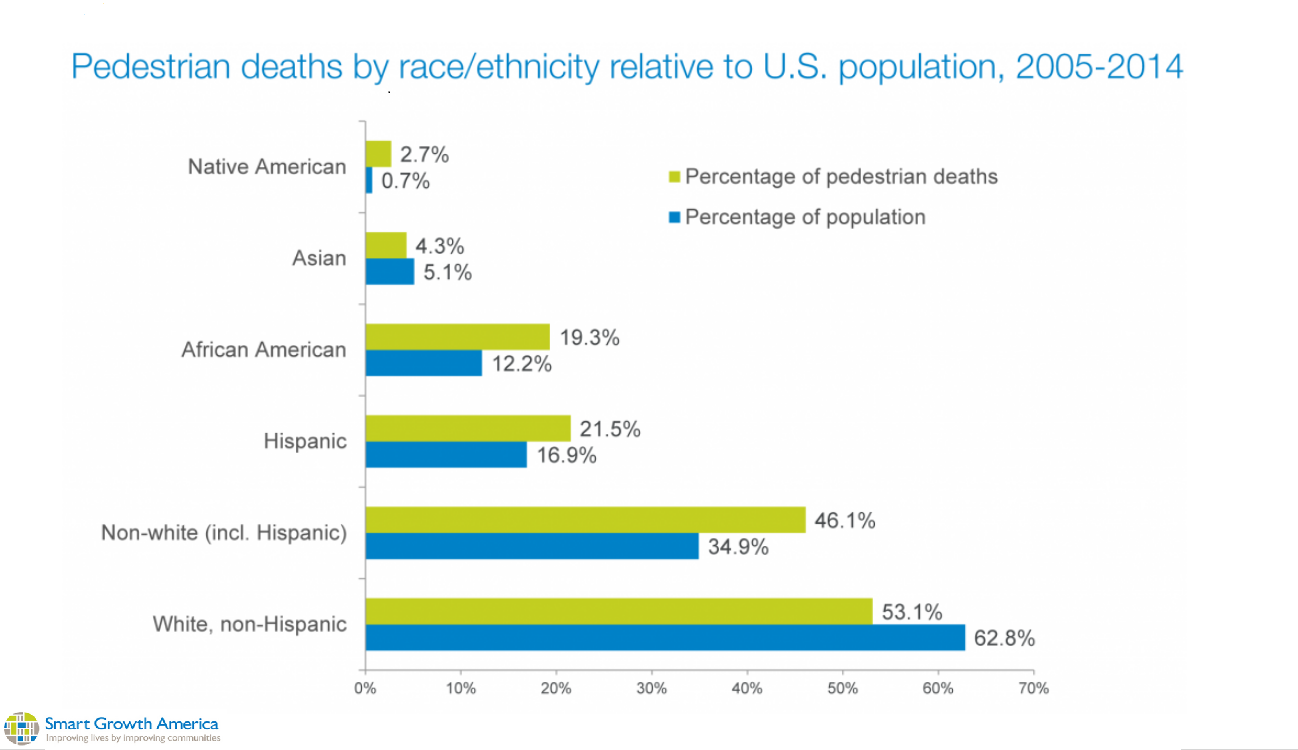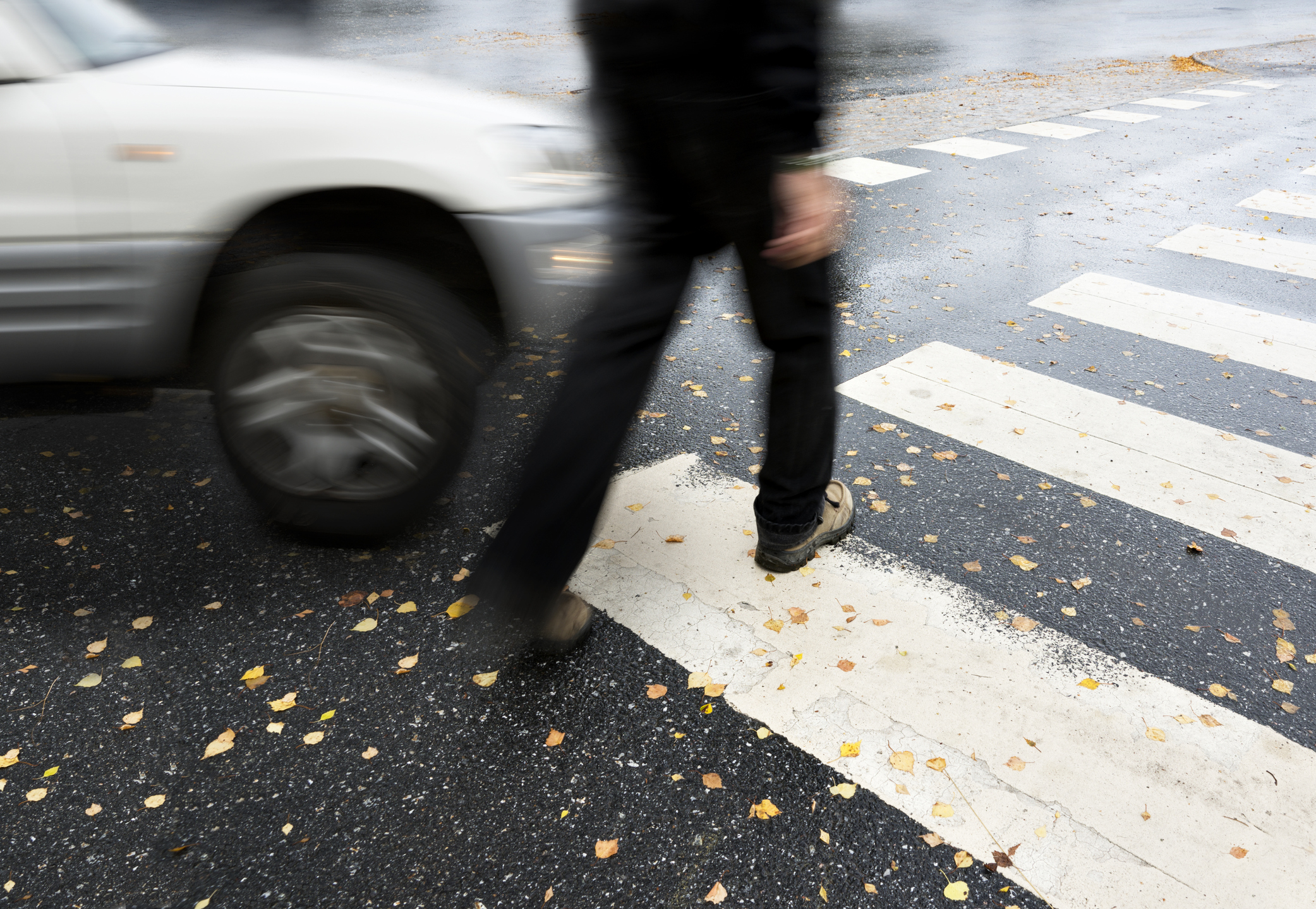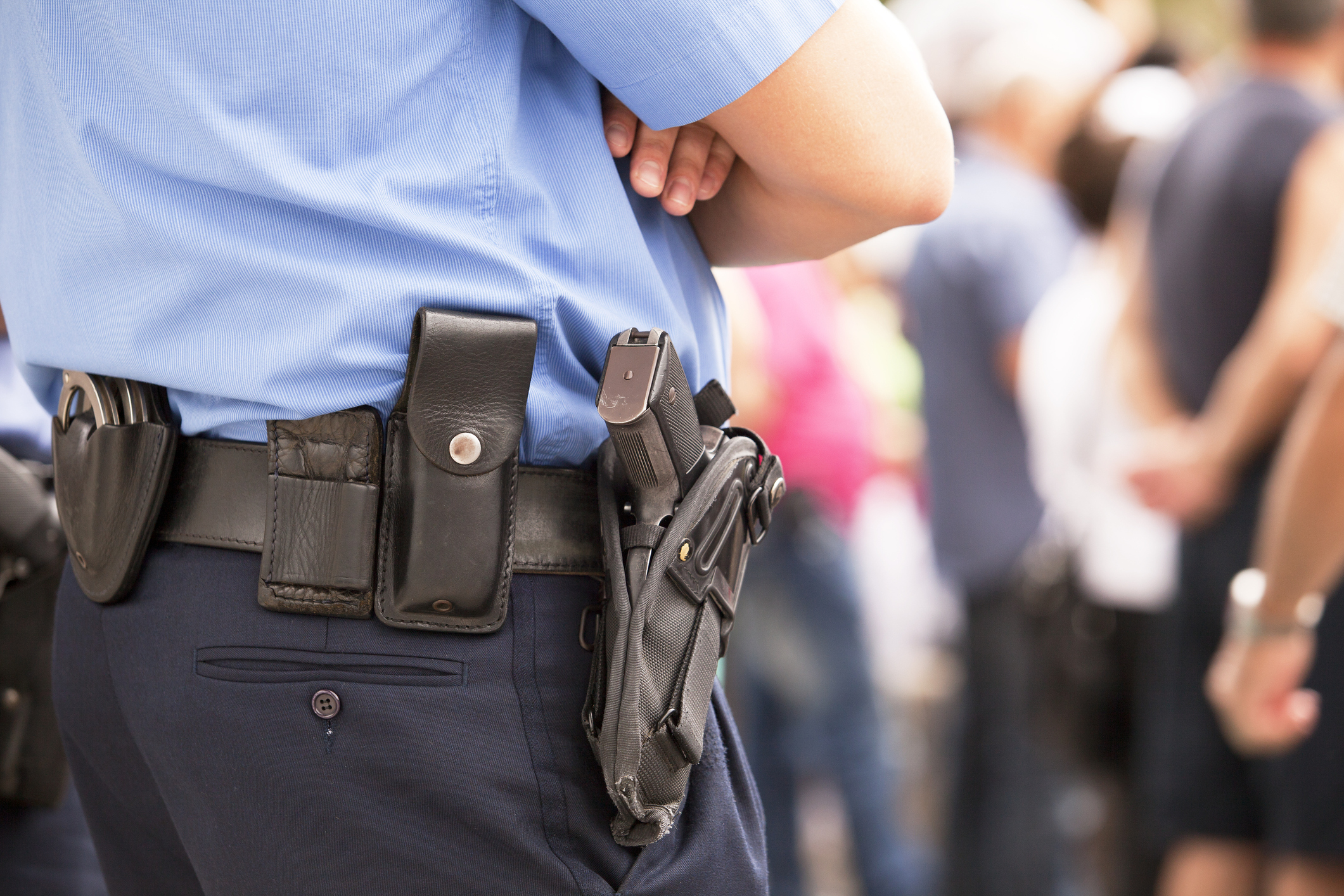
Share On Social!
The Safe Routes to School National Partnership (Safe Routes) is raising awareness to end over-policing as a safety solution in walking and biking initiatives.
Racial profiling by police, for example, threatens drivers, pedestrians, and cyclists of color.
These Latinos and other minorities, who already face less safe roads and fewer places to walk and bike, deal with a greater burden of traffic and pedestrian violations, too.
Safe Routes wants you to stand up for minorities by sharing on Twitter, Facebook or Instagram.
“As walk and bike advocates, we need to come together to protect people in communities made vulnerable not only by missing and poorly maintained bike lanes and sidewalks and inequitable policies, but also by over-policing,” wrote Holly Nickel, coalitions and equity manager of Safe Routes.
The Need for Safer Walking and Bicycling Initiatives
 Nonwhite individuals make up 34.9% of the population, but 46.1% of pedestrian deaths, according to Dangerous by Design 2016.
Nonwhite individuals make up 34.9% of the population, but 46.1% of pedestrian deaths, according to Dangerous by Design 2016.
Latinos make up 16.9% of the population, but 21.5% of pedestrian deaths.
These disparities are not enforcement issues.
They are engineering issues. That is what walking and biking safety movements, like Safe Routes to School, Complete Streets and Vision Zero, are all about.
Think protected sidewalks and bike lanes; traffic calming devices, like bulbouts, narrow lanes, and short blocks; street lights; crosswalks; and lower speed limits.
Latino and other communities of color have fewer of these elements.
For example, sidewalks, crosswalk signs, speed bumps, shoulders, stop signs and speed limit signs were uncommon on colonia streets in South Texas, according to a Salud America! research review.
Latino neighborhoods in Austin, Texas, have low street-level walkability due to poor visual quality, lack of physical amenities, poor maintenance, and low levels of perceived safety, according to the research review.
And on top of that, Latino and other communities of color face over-policing.
Racial Profiling

Enforcement of traffic, pedestrian, and bicycle laws are a key component of many walking and biking safety movements.
But policing has not proven effective in increasing real or perceived safety for minorities who walk or bike.
“White people may look to police as allies in making streets safer; people of color may not,” wrote Adonia Lugo, a transportation equity consultant and urban anthropologist, in a blog post pushing for equity in Vision Zero policies to reduce traffic fatalities.
Why?
Racial profiling.
This is the reliance on race to investigate street-level criminal activity and immigration violations.
Latinos and blacks are disproportionately stopped, ticketed, searched and arrested for/during a traffic violation than whites, even though they were less likely to be found breaking the law, according to a 2011 report. Latinos and blacks also have a higher rate of legal intervention deaths in the United States, according to a 2017 study.
One in five Black and Latino men reported that they personally had been unfairly stopped by police, according to Charles T. Brown, a transportation researcher and adjunct professor of planning and public policy at Rutgers University.
“Many assumptions and practices of biking advocacy have been disproportionately shaped by the white and well-to-do,” Michael Andersen of PlacesForBikes wrote in StreetsBlog USA of Brown’s work, Silent Barriers to Bicycling: Exploring Black and Latino Bicycling Experiences.

Racial profiling extends from traffic stops to pedestrian stops, too.
Blacks received 55% of all pedestrian tickets, while only accounting for 29% of the population in Jacksonville, Fla. Read the Walking While Black story and watch the video.
Tickets lead to burdensome fines and fees that harm low-income families.
“Paying the ticket would take half of your grocery money for the month,” Nickel wrote in her blog. “Sadly, you cannot pay the exorbitant cost. Then a late fee gets added, then another, and another, until your license gets suspended or even worse, a warrant is issued for unpaid traffic tickets.”
So What Can We Do?
We can’t rely on over-policing, said Leah Shahum, founder and leader of the Vision Zero Network.
Doing so may threaten real and perceived safety for people of color. It also could further isolate them from the health, social, and economic benefits of an active transportation network.
“No amount of police presence can overcome road designs and policies that simply don’t work well enough,” Shahum said.
Follow the work of walking and biking advocates who have spoken up about social justice and equitable policing: Charles T. Brown, Adonia Lugo, Keith Benjamin, Tamika Butler, Naomi Doerner, Topher Sanders, James T. Rojas, Kate Rabinowitz, Benjamin Conarck, Matias Valenzuela, Shavon Arline-Bradley, John Greenfield, Olatunji Oboi Reed, Sahra Sulaiman, and Stefani Cox.
Also watch America Walks’ quarterly webinar series, Walking Toward Justice—particularly episode #2—and check out our #SaludTues Tweetchat on the topic in September, 2017.
Then, as Safe Routes urges, push for equitable policing for walking and bicycling improvements.
They share eight ways to help, including:

“Educate yourselves and your community on community policing, anti-racial profiling strategies, and alternatives to calling the police,” Nickel wrote. “When talking and writing about enforcement as a safety strategy in walking and biking initiatives, clearly state that increased policing, especially in Black and Brown communities, can have some very detrimental impacts.”
You can also post this Safe Routes promise to Twitter:
[Twitter Handle] pledges to take a stand to end over-policing in walking and biking initiatives because Black and Brown communities matter @saferoutesnow #MoveEquity #BlackLivesMatter
“Let’s all raise our voices and put ourselves in action,” Nickel wrote.
By The Numbers
142
Percent
Expected rise in Latino cancer cases in coming years



